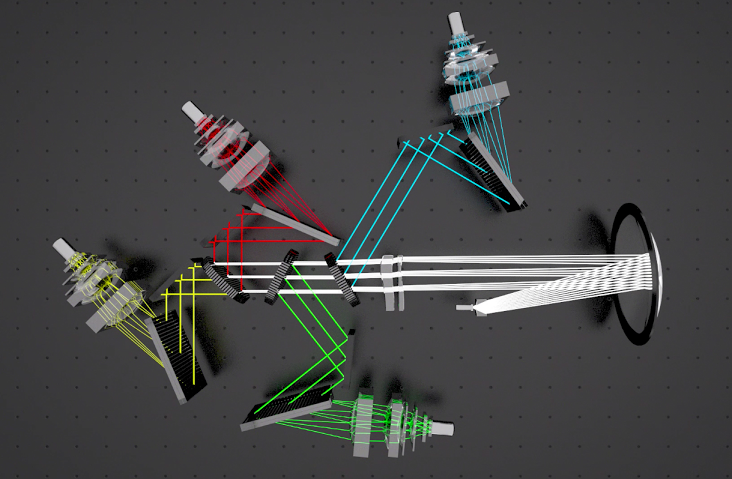Hunt For Sun’s Siblings From Stellar Nursery Torn Apart By Milky Way

In the largest survey of its kind so far, researchers have looked at the “DNA” of over 340,000 stars in our home galaxy, to identify the stars with the same chemical composition as the sun. Stars with the same chemistry originated in the same star clusters, and the survey would help astronomers find siblings of the sun before the Milky Way tore apart the stellar nursery where they all formed.
The research is led by astronomers from Australia, supported by colleagues from Europe, and is called the Galactic Archaeology survey, or GALAH. It “is a large-scale stellar spectroscopic survey of the Milky Way and designed to deliver chemical information” about a large number of stars. The announcement Tuesday about 342,682 stars was the first major public release of data by GALAH, which will eventually look at over one million stars.
Using the HERMES instrument at the Australian Astronomical Observatory’s (AAO) 3.9-metre Anglo-Australian Telescope, researchers identified the different chemical signatures of stars in our galaxy. This was done by passing the light from stars through a spectrograph, which splits light into its constituent wavelengths. Since different chemicals correspond to different wavelengths of light, this method allows astronomers to determine stars’ chemical make-up by analyzing their light.
The DNA, or chemical signature of each star, is a reflection of the various amounts of different chemicals the stars contain, and those are about two dozen different elements, like hydrogen, helium, oxygen, aluminum and iron.

Sarah Martell from the University of New South Wales, Sydney, who leads GALAH survey observations, said in a statement: “Every star in that cluster will have the same chemical composition, or DNA — these clusters are quickly pulled apart by our Milky Way Galaxy and are now scattered across the sky. The GALAH team’s aim is to make DNA matches between stars to find their long-lost sisters and brothers.”
To collect enough photons from each star to allow the spectrograph to do its work, researchers had to spend about an hour for each star they studied. The GALAH team spent over 280 nights at the telescope since 2014. It would have taken even longer if the team couldn’t observe 360 stars concurrently, thanks to fiber optics.
“No other survey has been able to measure as many elements for as many stars as GALAH. This data will enable such discoveries as the original star clusters of the Galaxy, including the Sun's birth cluster and solar siblings — there is no other dataset like this ever collected anywhere else in the world,” Gayandhi De Silva, from the University of Sydney and AAO, said in the statement.
Making this phenomenally large number of observations and analyzing them in four years would have been impossible without the help of computational technology. The researchers developed their own computer program, called The Cannon, to do the analysis for them.
Sven Buder, a PhD student at the Max Planck Institute for Astronomy, Germany, and lead author of the scientific article describing the GALAH data release, said: “We train The Cannon to recognize patterns in the spectra of a subset of stars that we have analyzed very carefully, and then use The Cannon’s machine learning algorithms to determine the amount of each element for all of the 340,000 stars.”
A total of 11 scientific papers related to the GALAH data release were published simultaneously Tuesday in two journals — Monthly Notices of the Royal Astronomical Society, and Astronomy and Astrophysics.
© Copyright IBTimes 2024. All rights reserved.




















